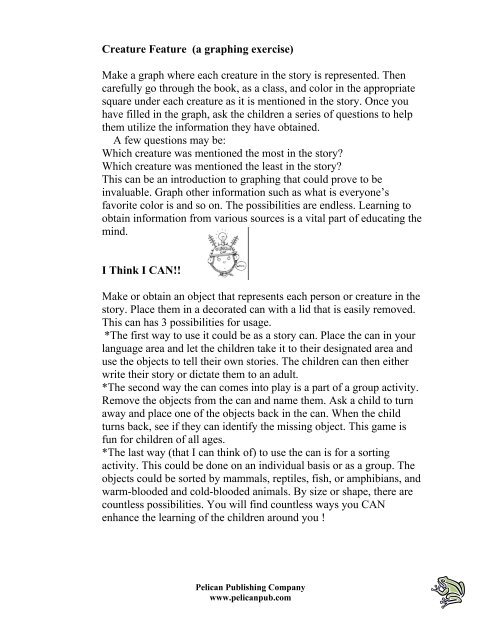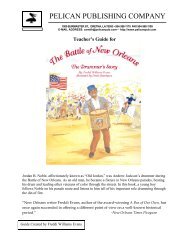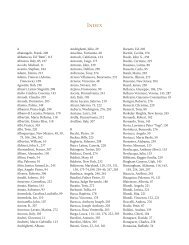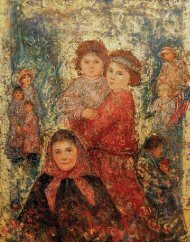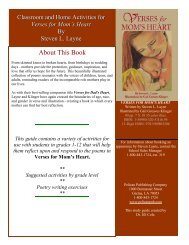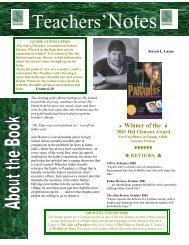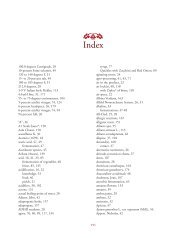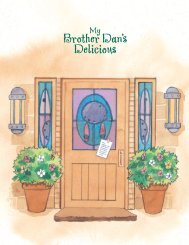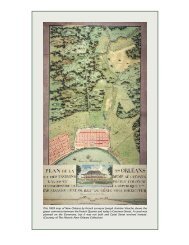the There Was an Ol' Cajun study guide. - Pelican Publishing ...
the There Was an Ol' Cajun study guide. - Pelican Publishing ...
the There Was an Ol' Cajun study guide. - Pelican Publishing ...
You also want an ePaper? Increase the reach of your titles
YUMPU automatically turns print PDFs into web optimized ePapers that Google loves.
Creature Feature (a graphing exercise)<br />
Make a graph where each creature in <strong>the</strong> story is represented. Then<br />
carefully go through <strong>the</strong> book, as a class, <strong>an</strong>d color in <strong>the</strong> appropriate<br />
square under each creature as it is mentioned in <strong>the</strong> story. Once you<br />
have filled in <strong>the</strong> graph, ask <strong>the</strong> children a series of questions to help<br />
<strong>the</strong>m utilize <strong>the</strong> information <strong>the</strong>y have obtained.<br />
A few questions may be:<br />
Which creature was mentioned <strong>the</strong> most in <strong>the</strong> story?<br />
Which creature was mentioned <strong>the</strong> least in <strong>the</strong> story?<br />
This c<strong>an</strong> be <strong>an</strong> introduction to graphing that could prove to be<br />
invaluable. Graph o<strong>the</strong>r information such as what is everyone’s<br />
favorite color is <strong>an</strong>d so on. The possibilities are endless. Learning to<br />
obtain information from various sources is a vital part of educating <strong>the</strong><br />
mind.<br />
I Think I CAN!!<br />
Make or obtain <strong>an</strong> object that represents each person or creature in <strong>the</strong><br />
story. Place <strong>the</strong>m in a decorated c<strong>an</strong> with a lid that is easily removed.<br />
This c<strong>an</strong> has 3 possibilities for usage.<br />
*The first way to use it could be as a story c<strong>an</strong>. Place <strong>the</strong> c<strong>an</strong> in your<br />
l<strong>an</strong>guage area <strong>an</strong>d let <strong>the</strong> children take it to <strong>the</strong>ir designated area <strong>an</strong>d<br />
use <strong>the</strong> objects to tell <strong>the</strong>ir own stories. The children c<strong>an</strong> <strong>the</strong>n ei<strong>the</strong>r<br />
write <strong>the</strong>ir story or dictate <strong>the</strong>m to <strong>an</strong> adult.<br />
*The second way <strong>the</strong> c<strong>an</strong> comes into play is a part of a group activity.<br />
Remove <strong>the</strong> objects from <strong>the</strong> c<strong>an</strong> <strong>an</strong>d name <strong>the</strong>m. Ask a child to turn<br />
away <strong>an</strong>d place one of <strong>the</strong> objects back in <strong>the</strong> c<strong>an</strong>. When <strong>the</strong> child<br />
turns back, see if <strong>the</strong>y c<strong>an</strong> identify <strong>the</strong> missing object. This game is<br />
fun for children of all ages.<br />
*The last way (that I c<strong>an</strong> think of) to use <strong>the</strong> c<strong>an</strong> is for a sorting<br />
activity. This could be done on <strong>an</strong> individual basis or as a group. The<br />
objects could be sorted by mammals, reptiles, fish, or amphibi<strong>an</strong>s, <strong>an</strong>d<br />
warm-blooded <strong>an</strong>d cold-blooded <strong>an</strong>imals. By size or shape, <strong>the</strong>re are<br />
countless possibilities. You will find countless ways you CAN<br />
enh<strong>an</strong>ce <strong>the</strong> learning of <strong>the</strong> children around you !<br />
Pelic<strong>an</strong> <strong>Publishing</strong> Comp<strong>an</strong>y<br />
www.pelic<strong>an</strong>pub.com


